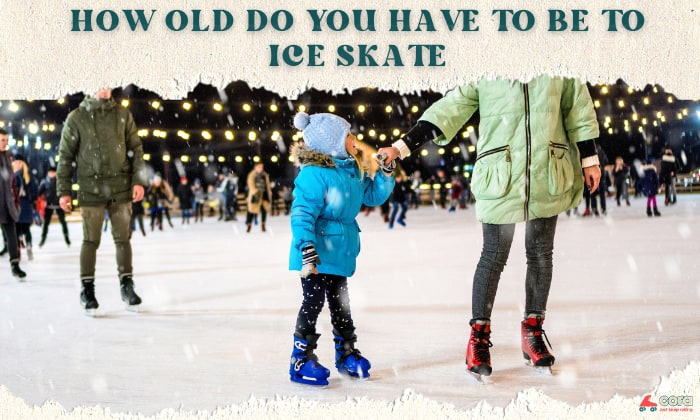One of the best parts of skating is skidding fast through the ice. Unfortunately, it does not occur miraculously. You will have to work your way up to your top speed.
So, How to Skate Faster?
While there are no skating techniques to ramp up your speed, there are a few things that you can do, like taking exercises for skating strength, to reach higher speeds on the ice. We will look through all of them in this detailed blog guide. If you want to ice skate fast like the stars you see on NHL skating, read on!
8 Things to Do to Skate Faster
To ice skate better and quicker, you must have the proper skating form nailed down. Luckily, it is not too difficult. Just keep the following in mind:
- Bend your front knee at about 90 degrees while the pushing leg should be relatively straight. In any case, your feet should be shoulder-width apart.
- Keep your back straight, chest up, and your neck in a neutral position
- Keep your body core stable
The bent knees will enable you to summon the full power of your legs while your spaced feet, square feet, and propped head offer the stability and balance needed for skating fast.
Following proper posture is proper techniques. To get better at skating fast, you need to invest time and effort into acing the skating stride.
Some of the most important things to remember are:
- Keep your arms locked at 90 degrees to add drive and momentum as you swing them back and forth to counterbalance your moving legs
- Push your legs out to the side and completely extend them when you do so
- Make sure your stride is at 45 degrees
- Do not curl your feet or kick up in the air behind you
- Bring your legs and feet back in after pushing them out
Your speed on ice will be the stride length multiplied by stride frequency. Thus, the longer your strides and the quicker each of your feet turn over, the faster you will be.
To lengthen your strides, you need to increase your stride range of motion and propulsive force.
- Stride Range of Motion: Stay low with bent knees and work on your hip range of motion.
- Propulsive Force: Push off of a stable stance leg with more power.
For improved stride frequency, you must shorten the time to bring your leg back after pushing it out to the side. This is simply because you can only start the next stride after your leg and foot return under the body.
Practicing off-ice with a skater cable or band pull and slide lateral lunges can help you boost your recovery rate phase (Aka, improve foot speed) to increase stride frequency.
Other general off-ice exercises to improve skating stride that you can consider doing are:
- Crawls—For your core and hips
- Hockey walks—For your glutes and quads
- Goblet squats—For your hips, core, and legs
- Bulgarian split squats—For your hips and legs
Note: If you train for speed to skate faster in hockey, begin practicing your form without equipment first, then add the equipment as you progress.
Read more: How fast do NHL players skate?
Sprint drills are speed training exercises that can help you get faster on ice. It will increase stamina and improve your acceleration, so you will ice skate faster.
The first drill to try is the Mountain Climber Drill. The proper posture for it is as follows:
- Grasp a hockey stick and hold your arms shoulder-width apart
- Lean forward so your knuckles rest on the ice
- Raise your backside and bend your knees
- Dig your toe edges into the ice but keep your knuckles on the ice
- Once you are in the proper form, push off and stride forward hard.
The second drill is the Push-Up Sprint.
- Lie down with your knuckles on the ice so that you are in a push-up position.
- Use your arms to push yourself up.
- Bring one foot in front and accelerate in a full sprint.
The third drill is the Resistance Sprint. It will work your muscles! You will need another person to join you in this drill and a resistance band as well.
- Put the resistance band around your waist and have your partner hold the band.
- Skate as fast as you can while your partner pulls the band to provide resistance.
These are straight-line sprinting exercises that make you faster on ice. But as you progress, it is important to move from off-ice to skate backwards, side to side, etc., as well.
A stable core ensures you can generate greater force with the muscles attached to it, such as the glutes. It also lowers your chances of sustaining common injuries while doing speed skater exercises.
Exercises that you can do to improve your core stability include:
- Deadbugs
- Bird – Dog Flex & Extend
- High Plank With Leg Pull & Push
- Single Leg Bridge With Heel Tap
- Palloff Press
As explained above, improved hip extension mobility can help boost your stride range of motion, which, in turn, lengthens your strides and allows you to skate faster.
Here is an exercise that you can do to improve your hip extension mobility:
- Start by kneeling on one knee. Your back and neck should be straight.
- Then, lean your body forward. Your hip in the front will stretch.
- Hold the position for a few seconds, then relax and pull your body back.
- Repeat steps 2 and 3 ten times.
- Repeat the process for your other leg.
- Rotate the bending knee 90 degrees. At this point, your body should be in a position similar to side lunges.
- Stretch your body sideways to work on your groin muscles. Do this 10 times before changing to the other leg.
Something else that helps with your hips is the Knee-To-Chest Stretch. Follow these steps:
- Lie on your back and extend your legs fully.
- Pull your left knee up to your chest as close to your body as possible, holding it there.
- Then, return it to its starting outstretched position.
- Repeat the process with your left leg.
- Alternate your legs 2 to 3 times.
Fire hydrants can also increase your hip mobility. Here is what you will need to do:
- Get on all fours. Make sure that your back is straight. Look forward, not down.
- Align your knees beneath your hips. Your hands should be below your shoulders.
- Tighten your core.
- Lift one knee up to your side and hold this position for a bit.
- Then, return your knee to the ground.
- Do this in 3 sets (Each set with 8 reps).
Glute training is very important for ice skating. Because you work your glutes a lot while skating, you must train them to be strong.
Here are some exercises that you can do without equipment:
- Clamshells
- Hip thrusts
- Single leg squats
- Single leg bridge
- Wall triple extension push
- Crossover step up
And here are a few with equipment:
- Rear foot elevated split with a kettlebell
- Romanian deadlifts
- Glute kickbacks with a resistance band
- Lateral band walks with a resistance band
Recall that you need to improve your propulsive force to make longer strides and go faster on the ice? You will need a stable leg to push off from with power! Exercises such as squats, lateral hops, lateral bounds, lunges, deadlifts, power cleans, and jumps can all make your legs stronger.
Ice skating is a good cardio activity, but it relies on you having prior solid cardiovascular fitness. If you want to skate fast and have your heart pumping quickly without becoming tired quickly, you need to strengthen your cardiovascular health.
Consider running, biking, and swimming. These are all excellent ways to enhance your endurance and stamina too.
Some Other Helpful Ice Skating Tips
- When pushing off for strides on the ice, push down with your entire foot, not your toes.
- Push your butt back to activate the glutes and relieve the load on your thighs.
- Do not place your weight on the inner edges when you push off, as this slows you down.
- Avoid rolling your ankle to maintain stability and power when you push off.
- Warm up before skating with dynamic stretches to ensure your muscles are ready.
- Consider taking power stroking classes at ice skating rinks.
Conclusion
Now that you have gone through this blog guide on how to skate faster, you can go ahead and apply everything that you have read! From striding forward skaters exercises to sprints and muscle workouts, there is plenty to do to become a faster skater.
If you still have any questions keeping you from taking the initiative to reach your top speeds on the ice, we will be happy to help! Just reach out to us in the comments down below.

Harrison is a skating enthusiast who picked up the sport during her student exchange years in Canada. She has been a skating coach for children and teens for 3 years and now holds classes as a freelancer. Harrison entwines her experience leading skating classes in the content published on Cora to help readers fall in love with skating, just like she did.
















